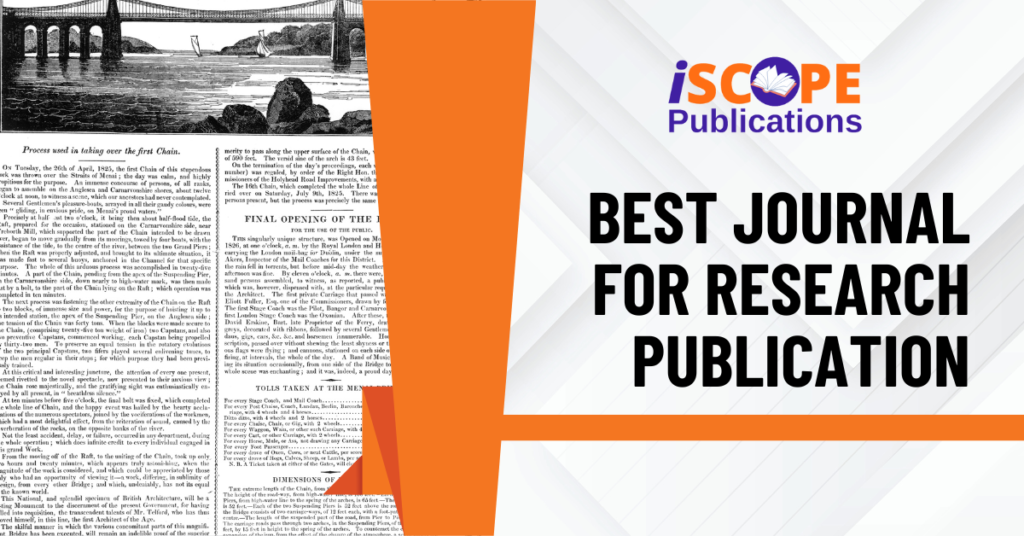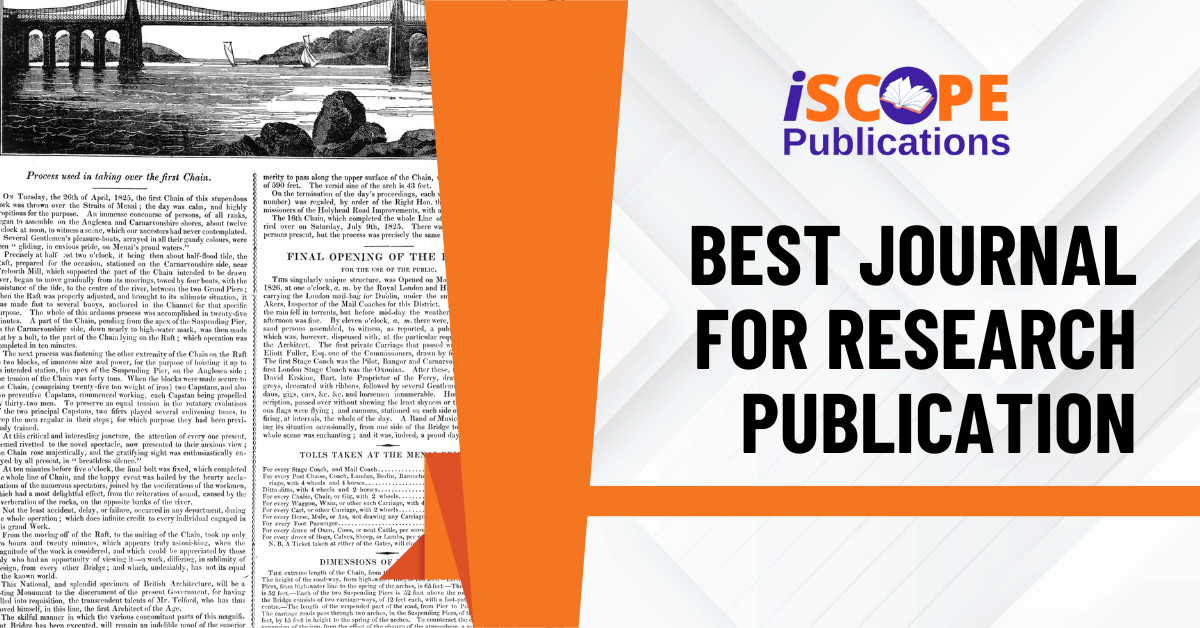Publishing research is an essential step in a scholar’s career. It not only validates your work but also contributes to the broader academic community. Thousands of journals available across various fields, choosing the right one for your research publication can be a daunting task. Key factors to consider when selecting the best journal for your research, which will provide you with a structured approach to navigate through the myriad of options.

Research Area
Before identifying a journal, it is crucial to have a clear understanding of your research area. Research interests can span multiple disciplines, so ensuring that your work aligns with a specific area of study will narrow down your search. Begin by reviewing the topics your research addresses and identifying whether it falls within a niche or a broader field.
- Identify Your Audience: Knowing the target audience of your research can help you select a journal with readership that would value your contributions. Consider whether your audience consists of academics, industry professionals, policymakers, or a combination of these.
- Review the Literature: Conduct a literature review in your field to identify which journals commonly publish work similar to yours. Take note of which journals have published influential papers in your area.
Journal Reputation and Impact Factor
The reputation of a journal can be a reflection of its quality. Consider the following metrics when assessing a journal’s reputation:
- Impact Factor: Metric measures the average number of citations received by articles published in a particular journal over a specified period (usually two years). While the impact factor is a widely used metric, it should not be the sole criterion for choosing a journal. It is beneficial to look for journals with a higher impact factor within your field, but also consider how it fits within your research context.
- Journal Ranking: Many academic institutions and platforms, such as Scimago Journal Rank (SJR), provide rankings based on various metrics. Rank the journals in your field to find those that carry a strong reputation.
- Editorial Board: Research the editorial board of the journal. Strong board composed of respected scholars in your field typically indicates a reputable journal.
- Indexing: Check if the journal is indexed in major databases such as Scopus, Web of Science, or PubMed. Journals that are widely indexed are more likely to have a broader reach and increase the visibility of your work.
Open Access vs. Subscription Journals
Deciding between open access and subscription-based journals is another essential consideration:
- Open Access Journals: Journals allow everyone free access to published articles, which can significantly enhance visibility and readership. Many open access journals require authors to pay a publication fee. If you choose an open access journal, ensure it adheres to rigorous peer review processes and is well-respected in your field.
- Subscription Journals: Traditional journals that require readers (including libraries) to pay for access. While they may not offer the same immediate visibility as open access journals, they often have established credibility and a wider academic reach.
Scope and Aim of the Journal
Each journal has its unique scope and aims, which explicitly outline the types of research they are interested in publishing. Familiarize yourself with the journal’s scope through the following steps:
- Read the Journal’s Guide for Authors: Section will provide significant insight into the types of articles the journal is looking for, including format, structure, and topics of interest.
- Check Recent Issues: Reviewing the most recent articles published in the journal can provide clarity on what kind of research is accepted. Look for studies that are similar to your own in both methodology and subject matter.
- Align Research: Ensure that your work closely aligns with the journal’s scope. Submitting to a journal that does not fit your research can result in rejection, consuming valuable time.
Peer Review Process
Understanding the journal’s peer review process is crucial for anticipating the publication journey:
- Types of Peer Review: Journals can employ various peer review models, such as single-blind, double-blind, or open review. Familiarize yourself with these models and consider which process you would prefer for your work.
- Average Review Time: Most journals will provide an estimated time for the peer review process on their website. If timeliness is a factor for you, consider journals that have a quicker turnaround without compromising quality.
- Turnaround Time for Publication: In addition to the peer review process, look at the timeline from acceptance to publication. Some journals may take longer than others to publish accepted articles.
Acceptance Rate and Author Guidelines
Acceptance rate of a journal provides insight into its competitiveness and the likelihood of your work being published:
- Acceptance Rate: Not always published, some journals provide statistics regarding their acceptance rates. Lower acceptance rate often indicates a more competitive journal, which can be advantageous for your research’s visibility if accepted.
- Author Guidelines: Review the journal’s author guidelines thoroughly. Ensure you understand the formatting, structural, and other specific requirements. Non-compliance with these guidelines can lead to immediate rejection.
Consider Institution’s Preferences
Many academic institutions have preferred journals for publication or prioritize research published in high-impact journals:
- Institutional Policies: Review your institution’s publishing policies and understand if there are specific journals they encourage, especially when it comes to tenure and promotion considerations.
- Funding Agency Requirements: Some funding bodies may have specific requirements regarding where research should be published. Make sure to check if there are any stipulations from grant sources before you choose a journal.
Networking and Recommendations
Leverage your academic network to gain insights into the publication process:
- Mentorship and Colleagues: Seek guidance from your mentors or colleagues who have published in your area. May have valuable insights into which journals are the most appropriate for your work.
- Conferences: Academic conferences can provide opportunities to network with journal editors and other researchers. Attending such events can give you a better understanding of current trends and preferred journals in your field.
- Join Academic Societies: Become a member of relevant academic societies that may have their own publications. These journals tend to focus on specific areas of research and may be a fitting choice for your work.
Ethical Considerations
Ethical publication practices are increasingly important in the academic community. Here are key aspects to consider:
- Predatory Journals: Be wary of predatory journals that promise quick publications without rigorous peer review. Ensure the journal is reputable and adheres to ethical publishing practices.
- Plagiarism Check: Many journals utilize plagiarism detection software. Ensure your work adheres to academic integrity standards.
- Conflicts of Interest: Disclose any potential conflicts of interest in your submission. Transparency is crucial in maintaining the integrity of research.
Selecting the best journal for your research publication is a multifaceted process that requires careful consideration of various factors, including the journal’s scope, reputation, peer review process, and alignment with your research audience. Taking the time to perform comprehensive research will not only enhance your chances of publication but also ensure that your work reaches its intended audience.



